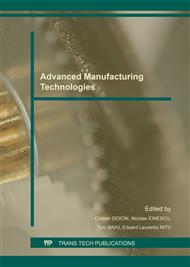p.108
p.114
p.120
p.126
p.132
p.141
p.147
p.153
p.161
Study on Waterjet Machining of Soft Material Components
Abstract:
Modern industry increasingly deploys waterjet machining of materials, a technology based on extremely complex and at times difficult to explain phenomena. Aimed at elucidating certain aspects of the cutting mechanics of waterjet machining, the paper presents the calculation and discusses the penetration depth of the water drops into the part material and the necessary working pressures.
Info:
Periodical:
Pages:
132-137
Citation:
Online since:
April 2016
Authors:
Keywords:
Price:
Сopyright:
© 2016 Trans Tech Publications Ltd. All Rights Reserved
Share:
Citation:


